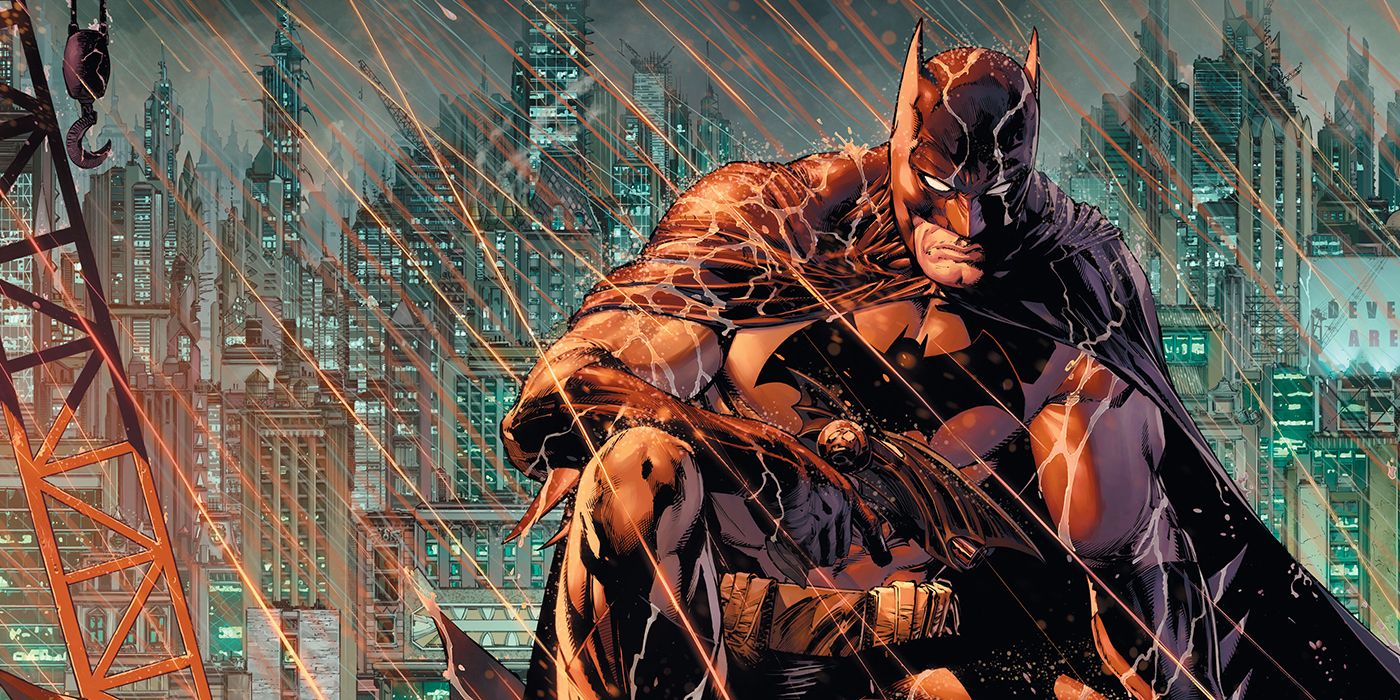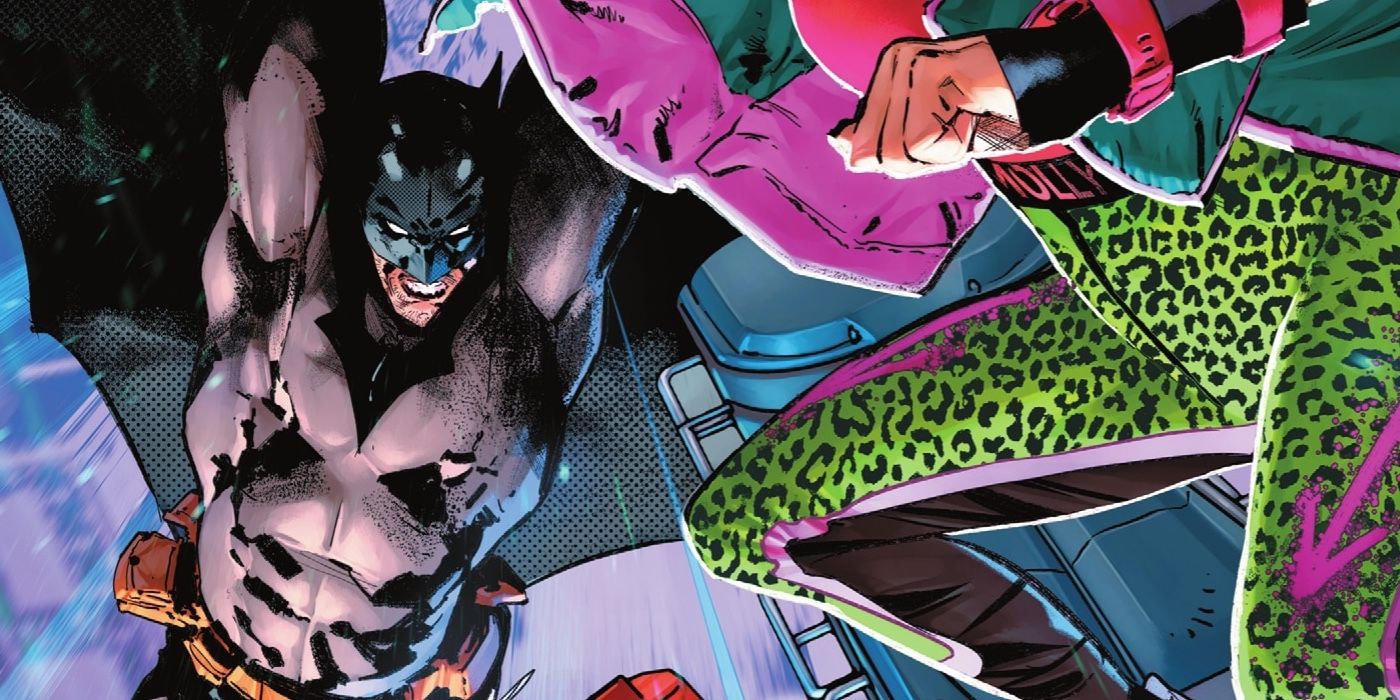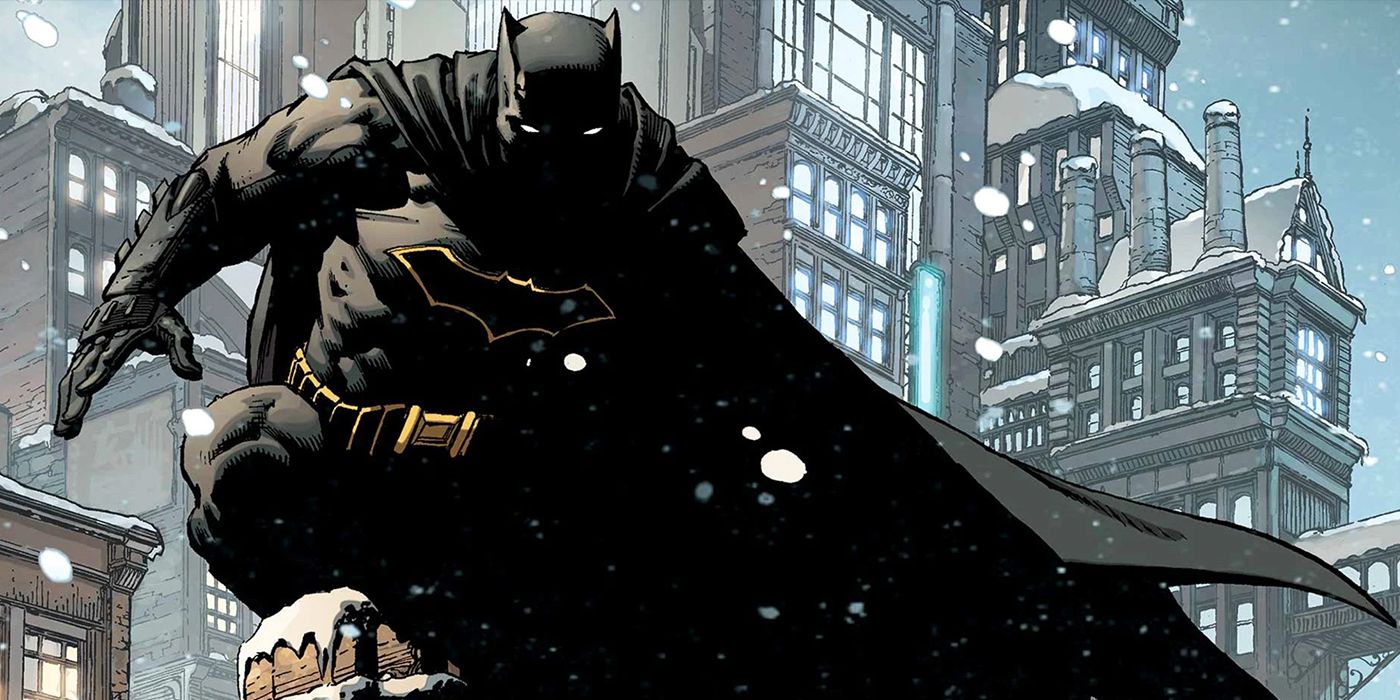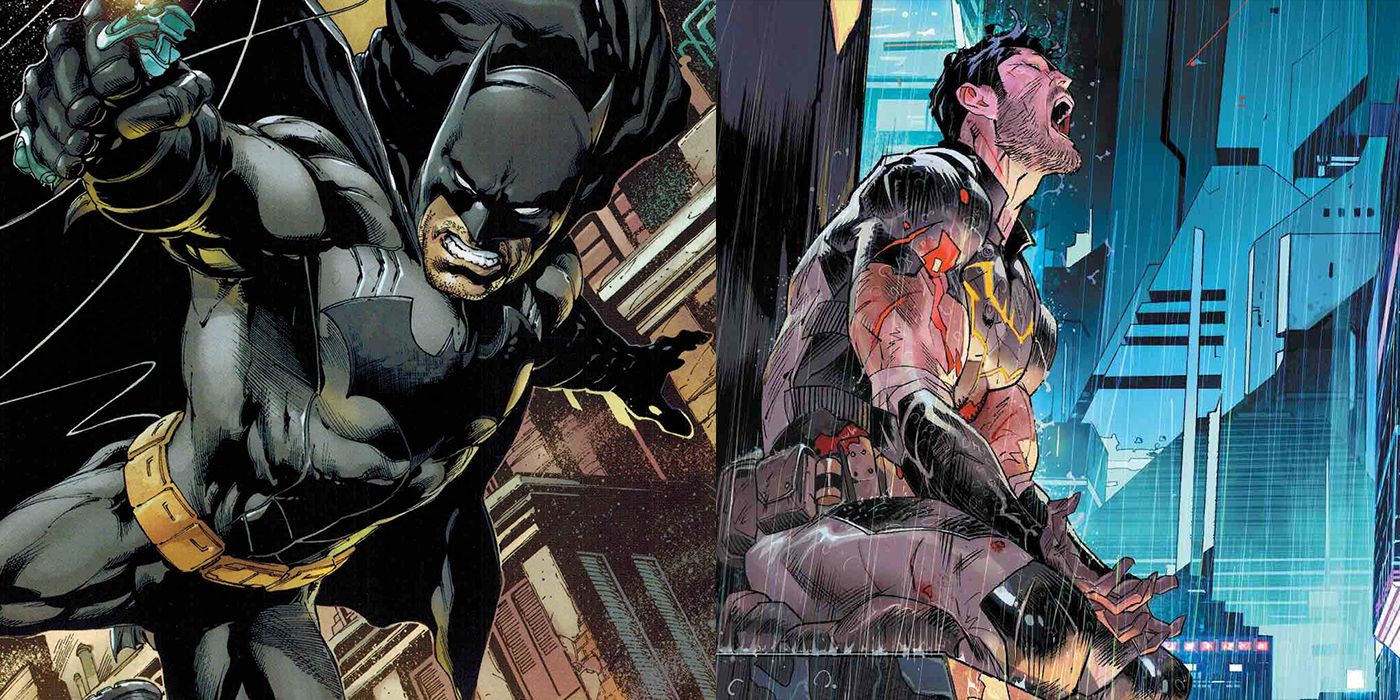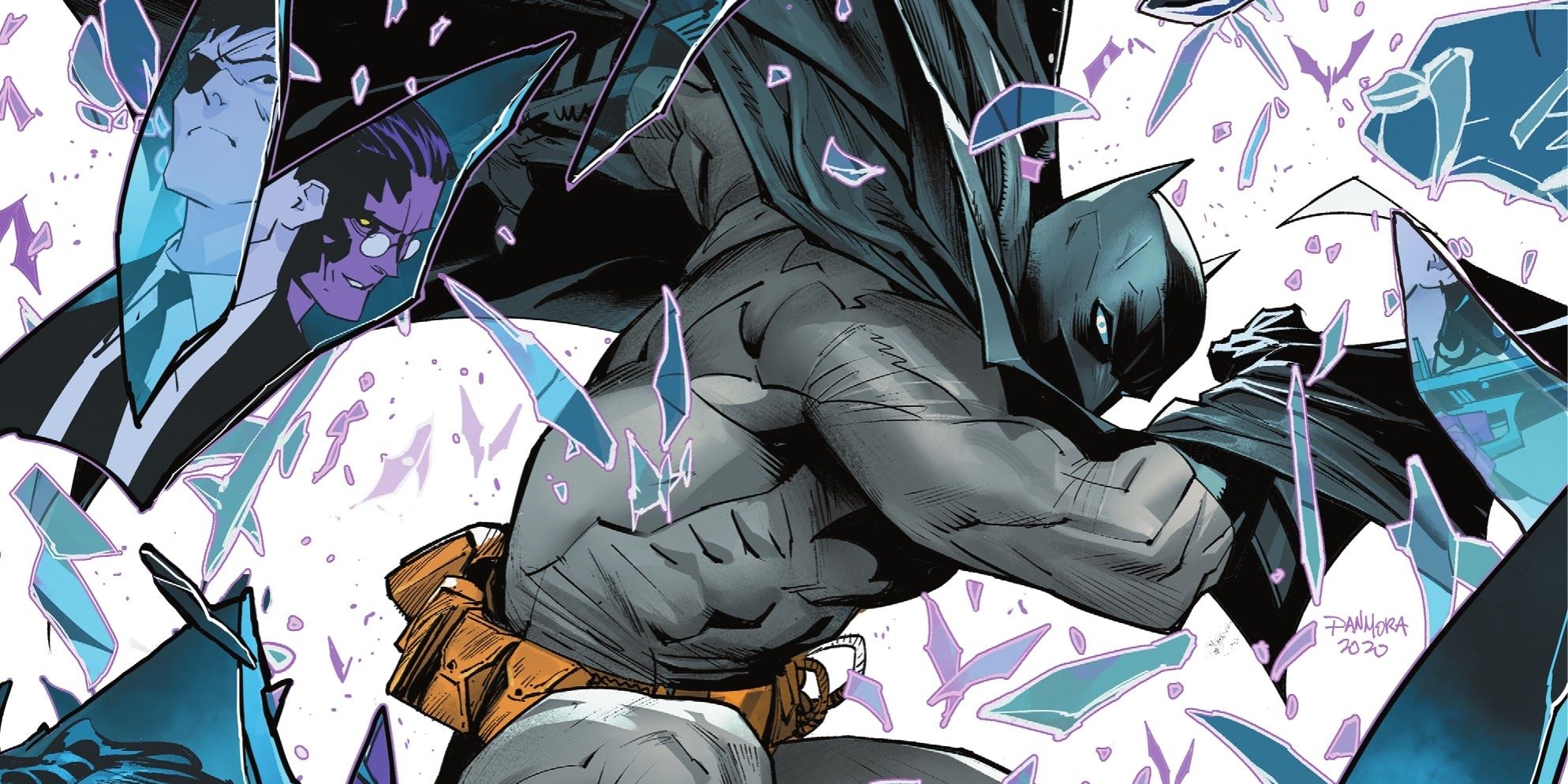Warning: spoilers for Batman #108 by James Tynion IV, Jorge Jimenez, Tomeu Morey, and Clayton Cowles are ahead!
There is an uneasy relationship between Batman and Gotham City, one that numerous writers have explored over the years in DC Comics. While Batman and Bruce Wayne care passionately about making Gotham a better place, they sometimes fall short of the mark due to their own weaknesses and human error. Public opinion of both Batman and Bruce is hardly ever stagnant, with the two sides of the character in almost constant controversy depending on the group. Still, if there is anything that can describe Batman's relationship with Gotham, it is that Gotham informs who he is on an existential level. Without Gotham, there is no Batman.
This idea is explored in Batman #108 (written by James Tynion IV, art by Jorge Jimenez, colors by Tomeu Morey, and letters by Clayton Cowles), whereupon Bruce Wayne goes undercover to infiltrate a new organization in Gotham called the Unsanity Collective. The Collective are described by Barbara Gordon in Batman #107 as "Transhumanism meets Robin Hood on hover gliders," referring to the group's egalitarian principles and their identities as cybernetically-enhanced people (written by James Tynion IV, art by Jorge Jimenez, colors by Tomeu Morey, letters by Clayton Cowles). What is significant about the group is that they have voluntarily had all their memories wiped from before they joined the Collective, allowing them to fully devote themselves to protecting the economic underclass of Gotham City without hindrance. So, in a sense, the Collective and Batman both share a desire to protect the vulnerable from Gotham's most tyrannical figures.
Once Bruce is able to meet one of the group's leaders, Miracle Molly, she quickly deduces that he is Batman, and the two discuss the merits of each other's methods. Molly poses to him the question, "Do you ever think how much stronger you could be, if you let your past go? Could that version of Batman actually save Gotham City?" This question hits at an essential conundrum that defines Batman as a character. A central anxiety that the Caped Crusader has is that he will never be able to properly save Gotham City as either Batman or Bruce Wayne, due to his personal shortcomings. Whereas other heroes possess godlike moral compasses that guide them through difficult circumstances, Batman is often fueled by rage and grief, pushing him towards violence. And while Molly presents a solution to this problem by suggesting that he undergo the same memory wipe as her and her colleagues, that is ultimately antithetical to Batman's existence as a superhero defined by his contradictions.
Ultimately, Batman cannot let his past go in order to be the hero that Gotham City needs, because his past is what makes him Batman in the first place. Bruce Wayne's childhood trauma has informed his methods as Batman, pushing him to become a figure to be feared, rather than aspired to. Without his past, Batman is not much more than a strongman in a suit, losing the crucial role that emotion plays in his work as a superhero. However, at the same time, the inequality in Gotham City has created dehumanizing conditions that millions of people are forced to live in. Because of his economic privilege, Bruce Wayne has managed to avoid living in squalor like many of the people Miracle Molly and the Unsanity Collective are trying to help. In the end, Batman #108 posits that the hero that Gotham needs is not Batman, but a person who is willing to sacrifice their humanity for the greater good. For Batman, this is ultimately an impossibility.
Miracle Molly's Question Looks At The Essential Parts of Batman.
While Miracle Molly's question to Batman appears to be an invitation into the Unsanity Collective, it really is an existential question for Bruce Wayne. It reflects the public's relationship with Batman, where his worth as a hero is only gleaned through his actions in Gotham City, considering that his identity as Bruce Wayne is kept a secret. The public do not have access to Batman's inner life, nor would they know that he is motivated by childhood trauma. Thus, Molly pointing out to Bruce that Batman might be more effective if he lost his past reveals how Batman is seen only as a crimefighting agent in Gotham City, devoid of personal motivations. Just as Gotham's economic underclass are dehumanized by those in power, Batman is also dehumanized by those who only see him as a crimefighter, rather than as a person who fights crime.
Related: Batman Explains Why He's Gotham City's Perfect Hero
On the surface, it might seem that the public's view of Batman would make him a good candidate for the Unsanity Collective, but ultimately, it would impossible for Batman to properly participate in their methods. So much of what Batman does is rooted in his private identity, taking aggressive action where Bruce Wayne could not. While Bruce Wayne may invest his wealth in rebuilding Gotham, he uses Batman as a way to see his plans through, ensuring that there is street level change. Batman simply could not exist without being an outlet for Bruce Wayne's rage and grief.
Batman Embodies Both The Human and Posthuman, Making Him An Impossibility For Gotham's Future.
Molly Miracle's question to Batman also invokes an existing ethos surrounding the Caped Crusader and his legacy in Gotham. Scott Snyder and Greg Capullo's The New 52 Batman run established Batman as an idea, rather than a person. For many people in Gotham, Batman is an intangible figure, one that is seemingly unable to die because of how influential he is. In this sense, this concept from the New 52 presents an alternative to the version of Batman that Molly Miracle suggests. Though the New 52 Batman is not transhuman like the Collective, he is certainly posthuman in how his existence transcends his physical form. That is, he lives on in the minds of people in Gotham just as much as he does physically in his own body.
The Unsanity Collective have voluntarily forfeited their own humanity in order to help the most vulnerable in Gotham City. Through technology, they have achieved a level of transhumanism through their cybernetic enhancements, taking them beyond the scope of average human experience. According to the Unsanity Collective's beliefs, Gotham needs an agent of liberation who would willingly sacrifice their personhood for the betterment of the city. However, looking back at the New 52 Batman, who was forced to reckon with status as an idea, instead of a person, it is clear that Batman is almost poised to be the hero Gotham needs. If it weren't for the fact that Batman is a representation of Bruce Wayne's most violent tendencies.
Batman is a character full of contradictions, and bears the weight of being both human and more than human in the minds of other people. This tension between Bruce Wayne's physical experience with being in the Batsuit and fighting crime and the larger effect that he has on Gotham's society makes him one of the most compelling figures in superhero comics today. As mythical as he is in Gotham, Batman is ultimately a deeply human and deeply flawed person caught up in a world that calls for heroes who are beyond the scope of reality.
No matter how hard he tries, it seems that Batman may never completely save Gotham, but that is to be expected. He is just a man in a suit trying to reconcile his fear, trauma, and anger in the name of justice. If anything, the standards of heroism that Gotham calls for evidences just how badly the city is in need of Batman in the first place. And while Batman does not conform to a heroic ideal, Future State shows that he was not afraid to go down without trying. And ultimately, that is his greatest legacy in Gotham City.

